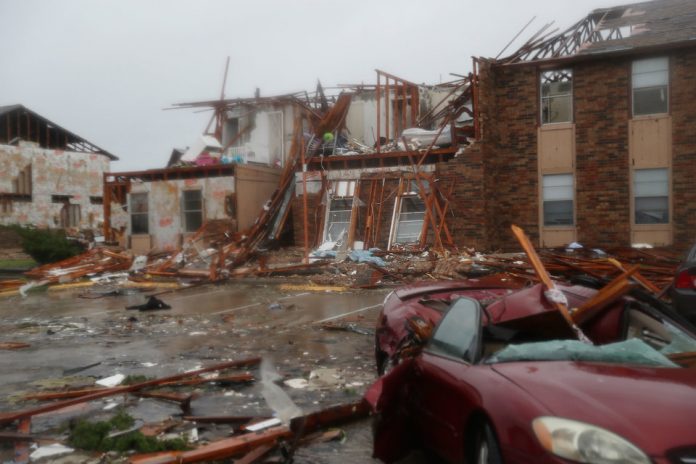
William “Brock” Long, newly installed as director of the Federal Emergency Management Agency, said in an interview a few weeks ago that there was one thing that worried him most when it comes to natural disasters: “You know what’s keeping me up at night? This country has not been hit by a major hurricane since 2005.”
That was the right thing to worry about, it turns out. Long, just two months on the job, is coordinating the federal response to Hurricane Harvey – the first Category 3 or greater storm to hit the U.S. in 12 years – and its lethal aftermath.
The storm has produced catastrophic flooding across thousands of square miles of south and Southeast Texas. Rain continues to fall in historic quantities. Rivers are rising to levels never before seen. People have taken refuge in attics or on rooftops awaiting rescue.
“This will be a devastating disaster, probably the worst disaster the state’s seen,” Long told The Washington Post on Sunday in a telephone interview from FEMA headquarters in Washington.
“The recovery to this event is going to last many years, to be able to help Texas and the people impacted by this event achieve a new normal,” Long said.
Long said 5,000 federal employees are already in Texas responding to the developing disaster. The initial response is a local and state responsibility, something Long has emphasized in two recent interviews with The Post. His mantra has been that disaster response should be a local-federal partnership.
As Long has described it, FEMA’s job is to arrive when the local and state agencies are overwhelmed, which is what is happening now in Texas. President Donald Trump signed a federal disaster declaration for the state, and Long said that freed him to unify efforts and send in federal resources.
Long has spoken of the need for a sea change in how the country prepares for disasters, noting that the federal government alone can’t always save the day. Ordinary citizens need to be prepared to be first responders, Long said. They need to have personal emergency plans. They need to be able to feed themselves for several days if disaster strikes. They need to be ready to save neighbors in harm’s way.
“People need to be the help before the help arrives,” he said earlier this month at FEMA headquarters on what the agency refers to as a “blue sky day” – a day without a major national catastrophe.
“I think we have to look at how we ask citizens to be ready, first of all. We used to look at citizens as disaster victims, now they’re looked at as what we call disaster survivors,” he said. “I think we have to focus our attention back on the citizens, and how we’re training citizens to be truly ready for a disaster. Whether it’s an active shooter, whether it’s a tornado, in many cases citizens find themselves having to render first aid, CPR, or making safety deicisons before the true first responders arrive.”
W. Craig Fugate, President Barack Obama’s FEMA director for two terms, said earlier this month that Long’s words about shared responsibility among federal, state and local agencies is an echo of what Fugate had been advocating when he ran the agency.
Both men said, in different language, something similar: Americans tend to get complacent about the possibility of a disaster. “We have a long way to go,” Long said about the nation’s overall disaster readiness. Fugate, now retired, was more blunt: “It sucks.”
Harvey is the first major hurricane – Category 3 or higher – to hit the U.S. since Wilma in 2005. Earlier that year, Hurricane Katrina killed more than 1,800 people, most of them in Louisiana, and put much of the city of New Orleans under water. FEMA’s initially sluggish and ineffective response to Katrina tarnished the agency’s reputation.
Will this disaster be as bad as Katrina?
“It’s hard to say. This is totally different from Katrina,” Long said, recounting the storm’s unusual pattern, making landfall as a Category 4 hurricane, then virtually halting in its tracks not far inland. Harvey, now a tropical storm with a center of circulation 35 miles west-northwest of Victoria, Texas, had started to backtrack slightly Sunday, moving at just 2 mph to the southeast.
“This is an incredibly unique event,” he said.
(c) 2017, The Washington Post · Joel Achenbach
{Matzav.com}











